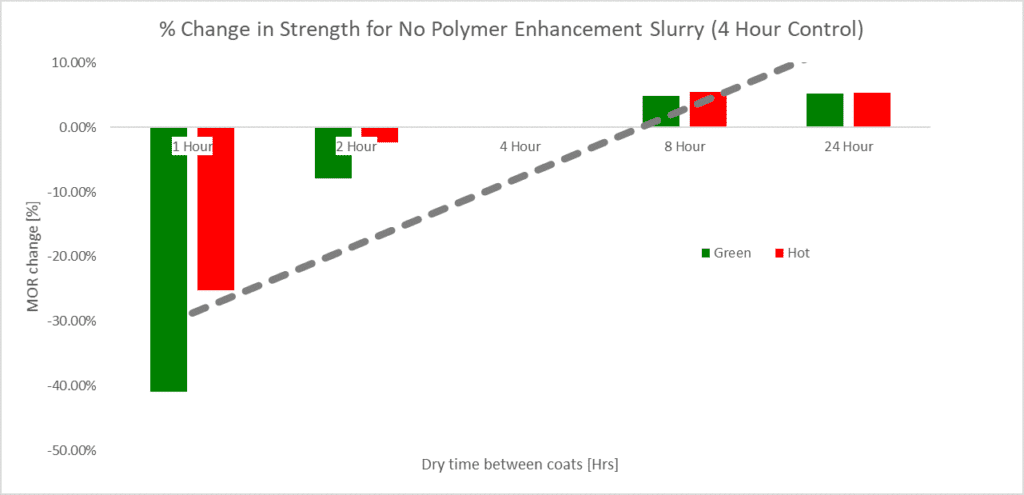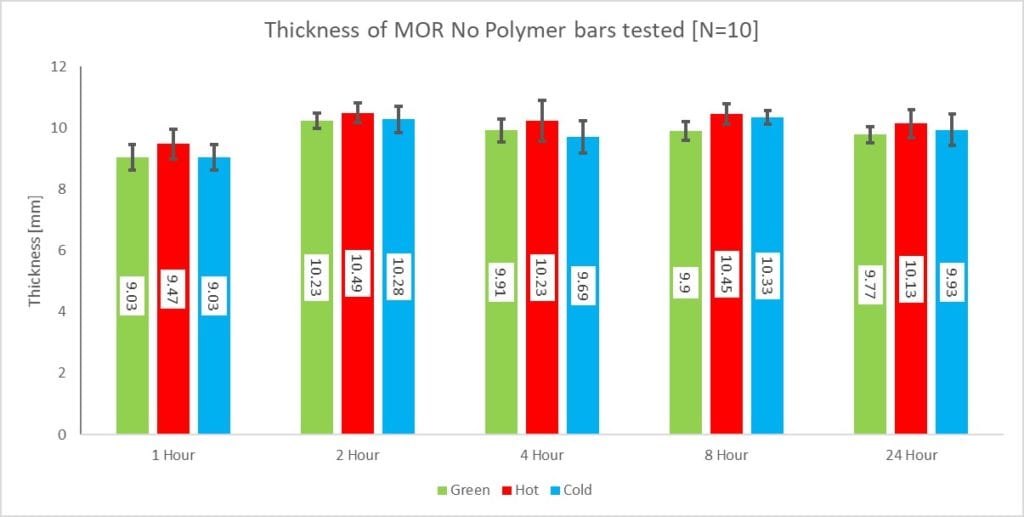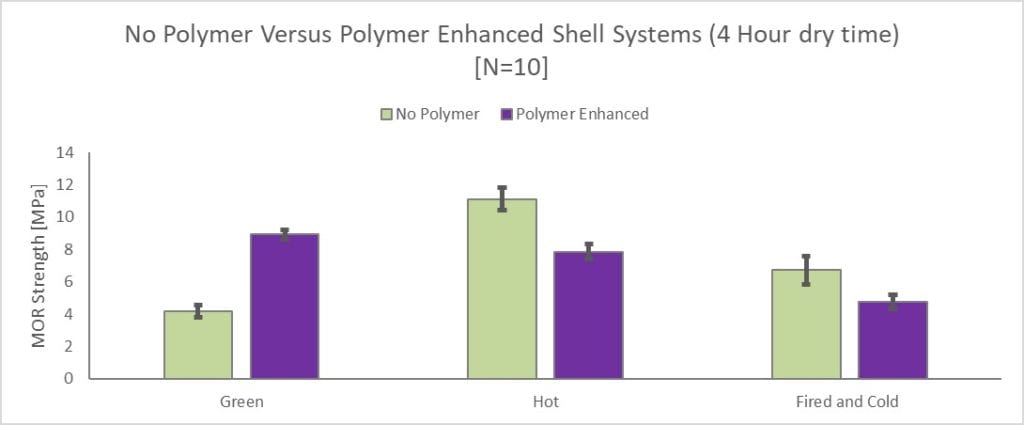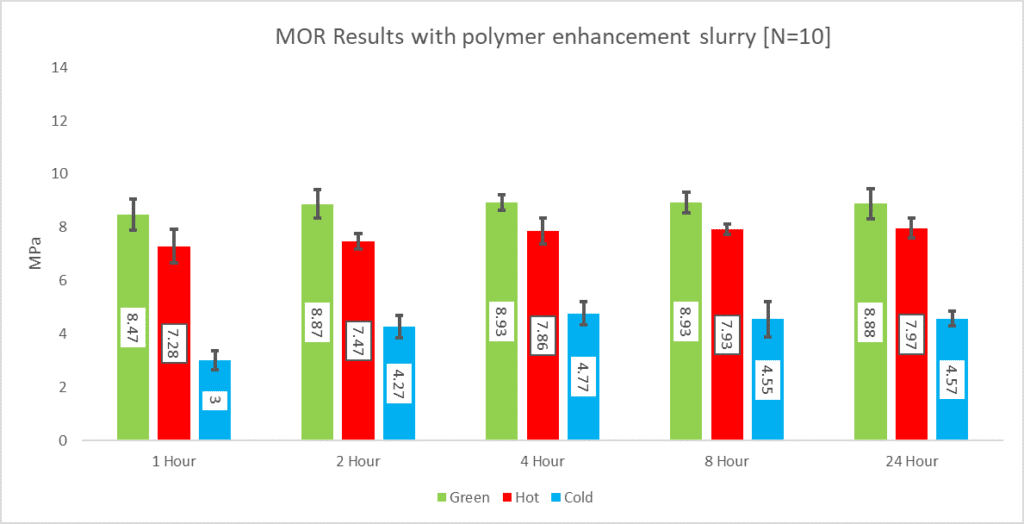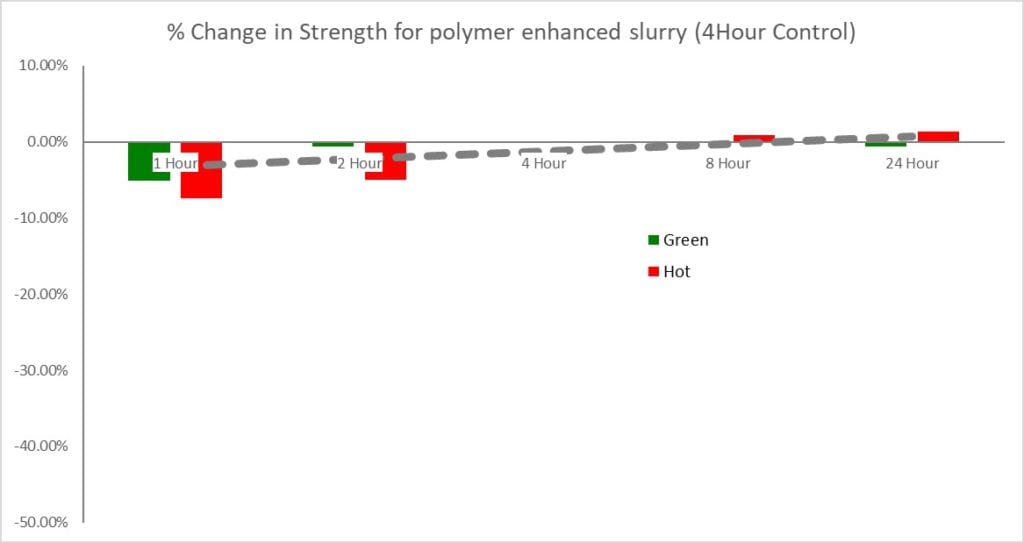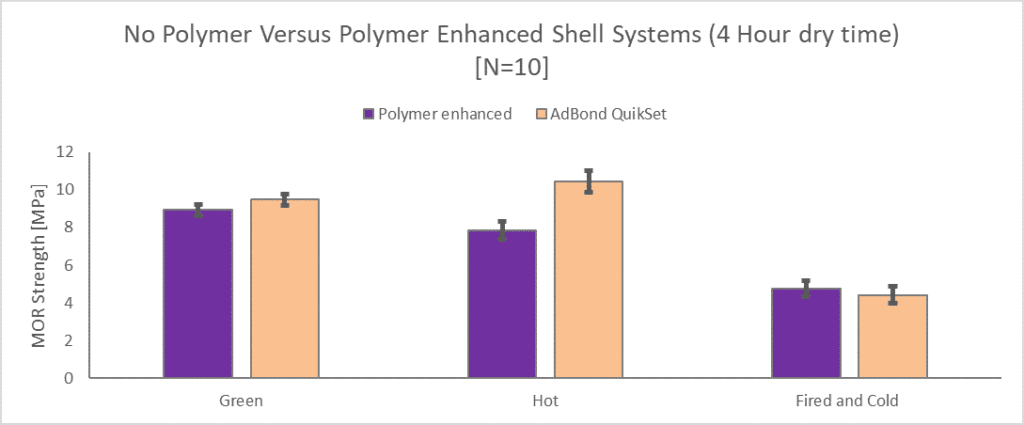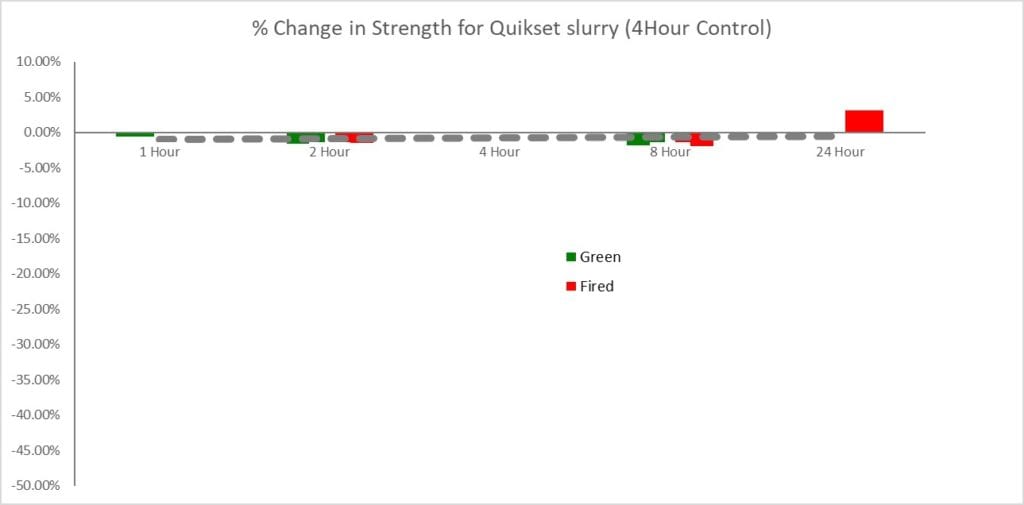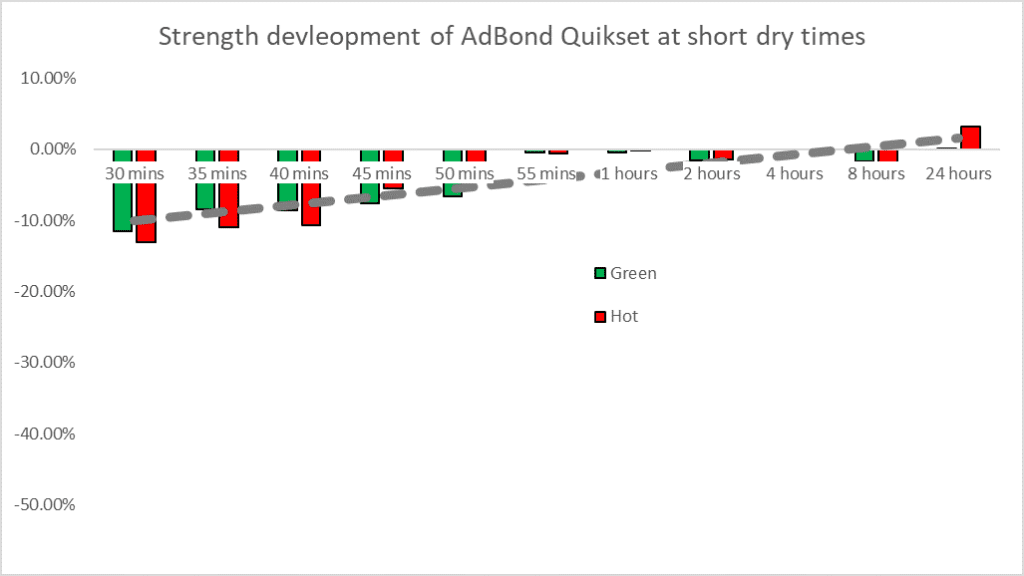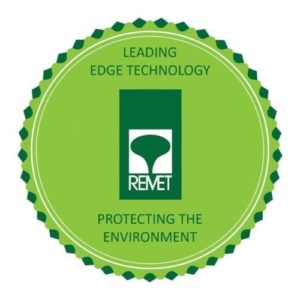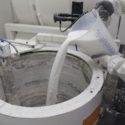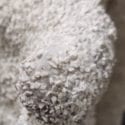Fundamental Analysis into the Drying of Ceramic Shells – Part 2
Introduction
This article follows on from the original article by Manuel Guerra & Gavin Dooley as presented in the June 2020 INCAST publication here: (https://www.remet.com/en/insights/drying-of-ceramic-shells-the-practice/). These results showed, for a standard aluminosilicate slurry without polymer, strength increases by 55 % as the drying intervals increase from 1 hour to 4 hours. After 4 hours up to 24 hours, the MOR strength starts to become similar and differences, or further improvements are negligible.
Figure 1 MOR versus intercoat dry time as present in the June 2020 INCAST magazine (Aluminosilicate shell)
This paper will reproduce this testing in a fused silica shell system. Following this, we will review the effects of two different polymer systems on this trend also.
Materials & Methods
Drying intervals used for this project were 1, 2, 4, 8 and 24 hours. The dipping log is shown below in Table 1. All MOR bars have a total of 9 coats, no prime coat was used. MOR testing is then carried out at green, hot (fired at 1000 °C) and fired & cold.
Table 1 MOR dipping log used in this paper.
| Type of Dip | Stucco Used | Coats |
| Backup Coat | Remasil 50 16-30 mesh | 8 |
| Seal Coat | No Stucco Used | 1 |
Table 2 shows the shell room environmental conditions used to dry MOR bars in this paper. A data logger tag was used to ensure that the conditions remained as stated below.
Table 2 Environmental Conditions used to dry MOR bars.
| Parameters | Results |
| Airflow [m/s] | 0.6 |
| Humidity [%RH] | 45 |
| Temperature [°C] | 20.7 |
The slurry formulations used in this paper can be found in Table 3 below.
Table 3 Formulation for each slurry used in this paper.
| Material | No polymer | Polymer Enhanced | QuikSet |
| Remasol® SP30 | 36.0% | 31.5% | 26.2% |
| AdBond® Ultra™ Polymer | – | 4.5% | – |
| AdBond® QuikSet™ Polymer | – | – | 5.3% |
| Burst® 100 | 0.2% | 0.2% | 0.2% |
| Victawet® 12 | 0.9% | 0.9% | 0.5% |
| Fused Silica 200 Mesh | 62.9% | 62.9% | 67.8% |
The MOR results mirrored the same results seen in the previous paper. The initial increase from 1 to 2 hour drying intervals was observed again. The drying intervals of 4, 8 and 24 hours were similar and differences observed were negligible.
Throughout this paper, a 4 hour drying interval was set as a control to allow changes in the percentage in strength to be assessed. This method highlights the difference seen with drying intervals of 1 to 2 hours. It again shows how there is small changes in MOR strength for 2, 4, 8 and 24 hours. This trend mimics the findings in the original paper and confirms the findings albeit at different values.
Figure 2 Percentage change in strength of no polymer shell system versus a 4-hour control
One other finding is that there seems to be a 1 mm thickness difference seen between 1-hour dry time and the other sample sets. This could represent that the shell is so weak, that it strips previous stucco particles from the wet shell and reduces the overall thickness.
Figure 3 Thickness comparison of no polymer shell system at different intercoat dry times
Polymer enhanced slurry
Moving onto the polymer enhanced slurry, we will look at the MOR. As you can see in Figure 4, the presence of the polymer has the effect of increasing the green strength by approximately 60%, while decreasing the hot strength by approximately 35%.
Figure 4 No polymer versus polymer enhanced shell systems (4-hour dry time)
The MOR results for MOR strength versus the intercoat dry time is displayed within Figure 5.
Figure 5 MOR results of a polymer enhanced shell system versus intercoat dry time
There is also the ability of the polymer to improve drying properties of the shell, so as per earlier, we will use the 4 hour dry time as a standard, and review the strength development over time.
Figure 6 Percentage change in strength of polymer enhanced shell system versus a 4-hour control
It can be seen there is a dramatic difference in the strength development with the presence of a polymer within the matrix. Not only is green strength higher, but it develops this strength much quicker within the shell due to the presence of the polymer.
AdBond® QuikSet™ Technology
Polymer technology, once developed over 30 years ago, has remained quite static, with some developments in cost and loading percent to maximise economy. However, in recent years, REMET has developed a polymer which is a developmental leap in polymer technology. AdBond® QuikSet™ is a novel polymer which has been designed to enhance drying beyond conventional polymer systems. REMET have presented literature worldwide on this material in various forums [1,2]. We applied the same methodology to this slurry also and found some very interesting results.
Firstly, as presented in many papers, the strength of the QuikSet polymer is higher than a standard polymer enhanced slurry. This is good news as it reduces even further the possibility of de-wax cracking within the system.
Figure 7 Comparison of polymer enhanced and AdBond QuikSet shell systems
Now, let’s look at the drying effectiveness of the material. This is of course the main benefit of this novel material. As presented in other literature [1,2], we believe the water can “wick” out of the ceramic and improve drying effectiveness compared to other polymer systems. Shown below again is the strength development of the system versus a 4-hour benchmark.
Figure 8 Percentage change in strength of AdBond QuikSet shell system versus a 4-hour control
As can be seen, the strength development occurs by the time 1-hour intercoat dry time is reached. So, not only can AdBond® QuikSet™ make a stronger green shell, it can do it quicker than a traditional polymer enhanced system. If we compared this result to the standard polymer enhanced slurry, it can be seen after 1 hour, shells are 11 % stronger and drier.
Finally, we attempted to establish a trendline of strength development for the QuikSet slurry be decreasing the dry time to less than 1 hour.
Figure 9 Percentage change in strength of AdBond QuikSet shell system versus a 4-hour control at shorter intercoat dry times
While there exists the same trendline at short dry times, even at these short dry times, the strength is always stronger than a standard polymer enhanced slurry.
Conclusion
There exists a strong correlation between dry time and the development of strength within the ceramic matrix. With the presence of polymer, this strength development improves greatly at lower dry times. It was further shown that the AdBond® QuikSet™ polymer can enhance the performance of the shell from both a strength and drying effectiveness position.
It should be considered that the shapes of the ceramic moulds will impact the drying effectiveness of your shell, especially in blind holes or deep pockets.
Disclaimer
Contact your nearest REMET sales office regarding product specifications. Contact your REMET territory manager and visit www.remet.com if you have any questions or require additional information.
Information and recommendations based on research and technical data believed to be reliable. Offered free of charge for use by persons with technical skills, at their own discretion and risk, without guarantee of accuracy REMET makes no warranties, express or implied, and assumes no liability as to the use of its products or of any information pertaining thereto. Nothing herein is intended as a recommendation to infringe any patent.
REFERENCES:
[1] G Dooley, M Everden, M Guerra, (2018) “Advances in Shell Room with quick setting polymer additive for ceramic back up Slurries” 65th ICI Technical Conference – Kansas City, MO
[2] G Dooley, M Everden, M Guerra, (2017) “Advances in Shell Room with ADBOND QUIKSET fast drying shell system” 9th International Seminar on Investment Casting 2017 -Tokyo
< Back to insights


